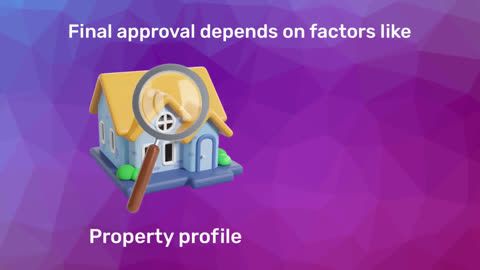Key considerations before buying rental property
Before diving into the rental property market, it's crucial to consider a few key factors:- Market research: Understand the local real estate market, including property values, rental demand, and vacancy rates.
- Property location: The location of your rental property significantly impacts its profitability. Look for areas with strong rental demand, good infrastructure, and potential for future growth.
- Budgeting: Determine how much you can afford to invest, taking into account the down payment, mortgage payments, property taxes, maintenance costs, and potential vacancies.
- Financing options: Explore different financing options, such as home loans, top-up loans, or balance transfer facilities, to fund your investment.
Steps to buying rental property
1. Market research and analysisThe first step in buying rental property is conducting thorough market research. This involves analysing the local real estate market to identify areas with strong rental demand and potential for appreciation. Key factors to consider include:
- Rental demand: Look for areas with a high demand for rental properties, such as urban centres, college towns, or regions with growing employment opportunities.
- Property values: Understand the current property values in the area and compare them with historical trends to assess potential appreciation.
- Vacancy rates: Check the vacancy rates in the area, as high vacancy rates can indicate an oversupply of rental properties or low demand.
- Rental yields: Calculate the potential rental yield by dividing the annual rental income by the property's purchase price. This will help you assess the profitability of the investment.
Once you have identified potential markets, the next step is to set a budget and plan your finances. This involves determining how much you can afford to spend on a rental property, including the down payment, closing costs, and ongoing expenses. Consider the following:
- Down payment: Typically, lenders require a higher down payment for rental properties compared to primary residences. Aim for at least 20% of the property's purchase price.
- Mortgage payments: Use a home loan EMI calculator to estimate your monthly mortgage payments and ensure they fit within your budget.
- Additional costs: Account for property taxes, insurance, maintenance, repairs, and potential vacancies when budgeting for your investment.
- Credit score: Ensure your credit score is in good shape, as this will affect your loan eligibility and interest rates.
Securing financing is a crucial step in the process of buying rental property. There are several financing options available, including:
- Home loans: A traditional home loan can be used to finance your rental property. Ensure you compare interest rates and loan terms from different lenders to find the best deal.
- Top-up loans: If you already have a home loan, consider taking a top-up loan to fund your rental property investment. This allows you to borrow additional funds at a lower interest rate than a personal loan.
- Balance transfer facility: If you have a home loan with another lender, you can opt for a balance transfer to Bajaj Housing Finance, which can offer lower interest rates and better loan terms. This can also provide you with the option to take a top-up loan.
Selecting the right property is key to the success of your rental investment. Consider the following factors:
- Property type: Decide whether you want to invest in a single-family home, multi-family property, apartment, or commercial property. Each type has its pros and cons, depending on your investment goals.
- Condition of the property: Inspect the property thoroughly to assess its condition. Older properties may require significant repairs and maintenance, which can affect your return on investment.
- Amenities: Properties with desirable amenities such as parking, security, and modern appliances tend to attract higher rents and better tenants.
- Tenant profile: Consider the type of tenants you want to attract, such as families, students, or young professionals. Choose a property that meets their needs and preferences.
Before finalising the purchase, ensure that the property complies with all legal and regulatory requirements. This includes:
- Title verification: Verify the title deed to ensure the seller has the legal right to transfer ownership.
- Zoning laws: Check local zoning laws to confirm that the property can be used as a rental.
- Building codes: Ensure the property meets all local building codes and safety standards.
- Lease agreement: Draft a clear and legally binding lease agreement that outlines the terms and conditions of the tenancy.
Once you have purchased the rental property, effective property management is essential to ensure a steady rental income. Consider the following:
- Tenant screening: Conduct thorough background checks on potential tenants to ensure they are reliable and financially stable.
- Maintenance: Regular maintenance is crucial to keep the property in good condition and attract quality tenants. Budget for ongoing maintenance and unexpected repairs.
- Rent collection: Implement a system for timely rent collection, whether it's through direct bank transfers or a property management service.
- Dealing with vacancies: Prepare for periods when the property may be vacant. Having a financial cushion can help cover mortgage payments and other expenses during these times.
To maximise your return on investment (ROI), consider the following strategies:
- Rent increases: Periodically review and adjust rent to keep up with market rates. However, be mindful of tenant retention and local rent control laws.
- Refinancing: Explore the option of refinancing your home loan to take advantage of lower interest rates. This can reduce your monthly payments and increase your cash flow.
- Property appreciation: Keep an eye on market trends and consider selling the property when it has appreciated significantly in value.
Secure your investment with Bajaj Housing Finance
Investing in rental property is a strategic way to build wealth, but it requires careful planning and execution. From market research to financing and property management, each step plays a crucial role in the success of your investment.To support your journey, consider the home loan solutions offered by Bajaj Housing Finance. With competitive interest rates, flexible top-up loan options, and a balance transfer facility, Bajaj Housing Finance provides the financial tools you need to make the most of your rental property investment.
Here are the steps to easily apply for a home loan online:
1. Click the "APPLY" button on this page.
2. Fill in your name, contact number, and employment details.
3. Select the loan type and verify with an OTP.
4. Enter your income details, loan amount, and property status.
5. Provide your date of birth, PAN number, and any other required information.
6. Submit your application.
After submission, a representative will contact you to guide you through the next steps.
Whether you are a seasoned investor or just starting, Bajaj Housing Finance is here to help you achieve your financial goals.




